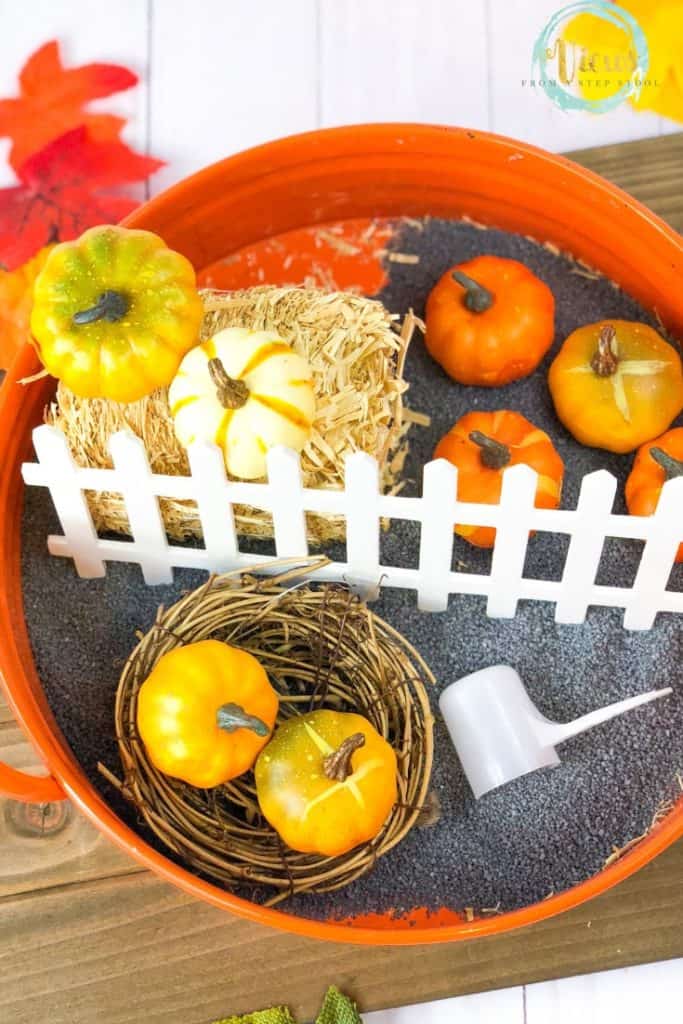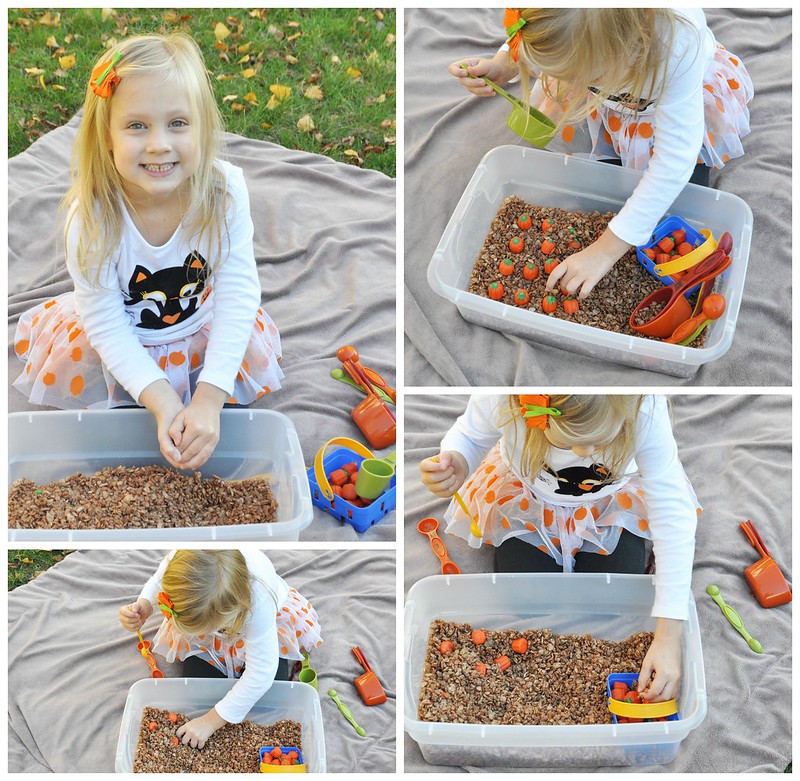Pumpkin Patch Sensory Bin
A pumpkin patch sensory bin is a wonderful way to introduce children to the holiday season and celebrate the fall harvest. It provides a tactile and sensory experience that engages children's imagination, creativity, and curiosity. In this blog post, we will explore the benefits of creating a pumpkin patch sensory bin for children and share some tips on how to make the most of this fun and educational activity.
Pain points related to pumpkin patch sensory bin:
Some parents may worry that creating a pumpkin patch sensory bin will be messy or difficult to manage, but with a little planning and preparation, it can be an enjoyable and stress-free experience. Parents may also worry about their child's safety, but as long as all materials are age-appropriate and closely supervised, the sensory bin can be a safe and enriching activity for children.
Target of pumpkin patch sensory bin:
The target of a pumpkin patch sensory bin is to provide a fun and engaging way for children to learn about the harvest season and develop their senses through tactile play. Children can explore the different textures, colors, and shapes of pumpkins, as well as develop their hand-eye coordination and motor skills. Additionally, playing with a sensory bin can foster creativity and self-expression.
Summary of article's main points:
In this blog post, we have discussed the benefits of creating a pumpkin patch sensory bin for children. We have addressed potential pain points related to the activity and outlined the target of the sensory bin. We have also shared tips and ideas for making the most of this fun and educational activity, which can help children develop their senses, creativity, and cognitive skills.
Creating a pumpkin patch sensory bin
Creating a pumpkin patch sensory bin is easy and customizable. You can use a variety of materials to create a sensory experience that best suits your child's interests and skills. Here is an example of how to create a pumpkin patch sensory bin:
Start with a sturdy container, such as a plastic bin. Fill the container with some sensory base, such as rice, lentils, or sand. Add in some plastic or foam pumpkins, gourds, or other fall-themed items. You can also include some scoops, spoons, and other tools for children to manipulate the sensory base and objects. Encourage children to explore the sensory bin, sort the pumpkins by size or color, and create their own pumpkin patch scene.

Modifications for different age groups
If you have children of different ages, you can modify the pumpkin patch sensory bin to suit their needs and skills. For younger children, you can use larger and more colorful objects, such as soft foam pumpkins or fabric leaves. You can also use a larger sensory base, such as dried beans or popcorn kernels, to make it easier for them to manipulate and grasp. For older children, you can add more complex materials, such as magnifying glasses or measuring cups, to encourage exploration and scientific inquiry.

Benefits of pumpkin patch sensory bin
Playing with a pumpkin patch sensory bin can provide several benefits for children's development. Here are some of the benefits:
- Stimulates the senses and promotes sensory integration
- Develops fine motor skills and hand-eye coordination
- Encourages curiosity and exploration
- Promotes creativity and imagination
- Develops cognitive skills, such as sorting, categorizing, and problem-solving
Question and Answer
Q: How can I make the sensory bin more challenging for my child?
A: You can add some more complex sensory materials, such as water beads or kinetic sand, to provide a new textural experience. You can also add some items for sorting or counting, such as mini pumpkins or acorns of different sizes. Finally, you can encourage your child to create their own pumpkin patch scene, using other fall-themed materials, such as leaves or twigs.
Q: Is it safe to use food items in the sensory bin?
A: Yes, as long as the food items are non-toxic, age-appropriate, and closely supervised. You can use edible materials, such as popcorn kernels or dried beans, to provide a different sensory experience. Just be sure to avoid any choking hazards and wash your hands and materials thoroughly before and after use.
Q: How can I use the sensory bin for learning?
A: You can use the sensory bin to teach children about the harvest season, the life cycle of pumpkins, and the different parts of a pumpkin. You can also use the sensory bin to practice counting, sorting, and categorizing, as well as to enhance vocabulary and language skills.
Q: How can I store the sensory bin?
A: You can store the sensory bin in an airtight container, such as a plastic bin with a lid. Keep it in a cool and dry place, away from direct sunlight and moisture. You can also add some essential oils or natural scents, such as cinnamon or vanilla, to keep the sensory bin fresh and pleasant-smelling.
Conclusion
In conclusion, creating a pumpkin patch sensory bin can be a fun and educational way to celebrate the fall harvest and engage children's senses and curiosity. By providing a safe and enriching experience, parents and caregivers can support children's development and creativity, while also fostering a love of learning and exploration.
Gallery
Pumpkin Sensory Bin With Modifications By Age - Views From A Step Stool
Photo Credit by: bing.com / pumpkin bin sensory patch fun exploring picking counting twist pretend place some farm animals
Our Five Ring Circus: Edible Pumpkin Patch Sensory Bin
Photo Credit by: bing.com / lily
Five Little Pumpkins Sensory Bin | I Heart Crafty Things
Photo Credit by: bing.com / bin sensory pumpkin pumpkins little five patch poms cleaners remaining sparkly pipe section orange using green made
Five Little Pumpkins Sensory Bin | Halloween Sensory Bin
Photo Credit by: bing.com /
This Pumpkin Sensory Bin Resembles Everything You Would Find At A Real
Photo Credit by: bing.com / pumpkin sensory bin toddlers





